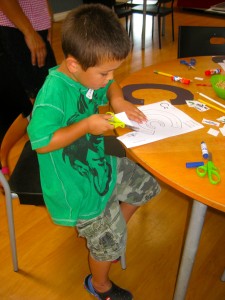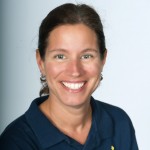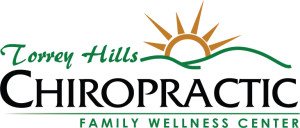Is Your Child Ready for Kindergarten (Part II)?
Now that school is underway, you may have a Kindergartener that started school a few weeks back. Last month, I posted an article titled Is Your Child Ready for Kindergarten in the area of Language Arts. This month we will focus on Mathematics.
 Prior to entering Kindergarten, your child should begin to:
Prior to entering Kindergarten, your child should begin to:
Number Sense & Numeration
- develop both ordinal and cardinal concepts using naturally occurring opportunities (How many pencils do we need? Who is third in line?)
- count with understanding and recognize “how many” in sets of objects 0-10 (dots on dominoes)
- recognize when things are divided into equal parts through experiences with simple fractions
- begin to develop an understanding of the concepts of multiplication and division by using real objects to solve story problems involving repeated joining (addition) of groups of equal size or distribution of equal shares
- develop a sense of whole numbers and represent them in flexible ways
- find and explore patterns in real life and understand that patterns can help us predict what comes next (explore repeating and growing patterns in rhythmic chants, repetitive songs, predictive poems, clapping patterns, clothing, and nature)
- repeat, create, and extend number patterns. Count by 5s, to 30 & 10s to 100
- count backwards 10-1
- use concrete, pictorial, and verbal representations to develop an understanding of the symbols used in mathematics (A child may say “3 + 2 is 5 and 2 more is 7”)
- model situations that involve addition and subtraction of whole numbers. Use familiar objects, pictures, and symbols (There are four children. Each of the children wants to eat two cookies. How many cookies do we need all together?)
- describe qualitative change, such as hair growing longer
- describe quantitative change, such as a child growing two inches in one year
- recognize, describe, name, build, draw, manipulate, and sort two- and three- dimensional solid shapes (including the basic shapes – sphere, cone, cube, rectangular and triangular prisms)
- begin to explore and investigate attributes of shapes (Take apart a cereal box, experiment with folded paper, create shapes on geoboards or dot paper)
- mark a path to make a simple map and begin to distinguish navigation concepts, such as left and right
- solve puzzles using transformations, such as slides, flips, and turns with teacher guidance, recognize, describe, and informally prove symmetric characteristics of design (use pattern blocks to create designs with line and rotational symmetry)
- create mental images of geometric shapes using spatial memory and spatial visualization (experiment with loops of string to make shapes)
- exhibit enhanced visualization. Ask children to recall the number of dots on dominoes. Take visualization a step further by asking children to figure out the number of dots on dominoes. Take visualization a step further by asking children to figure out the number of dots on a particular domino without counting
- recognize shapes from different perspectives
- begin to relate in geometry to ideas in number and measurement (It took 12 tiles to cover the area of this square)
- explore measurement through play
- measure using non-standard and standard units and understand the difference between them (measure with paper clips laid end to end; measure the length of a table with a tape measure
- use informal sorting experiences in order to focus attention on common attributes (sorting groceries)
- use simple grids to play games (bingo, tic-tac-toe) and to read a calendar
- understand that we can make predictions or decisions based on data we collected from past experiences or class discussions
- begin to use the simple language of probability (might, probably)
- discuss events related to the child’s experiences as likely or unlikely
- ask questions, collect data, and record the results using objects, pictures, and picture graphs
- solve problems related to daily routines or as a response to mathematical situations identified in a story
- solve problems that relate to classification, shape, or space (Which blocks will fit on the shelf? Which blocks do your need to model a giraffe? How many figures are alike and how many are different? Will this puzzle piece fit in the space that remains?)
- make decisions about how to solve a problem
- determine the approach, materials, and strategies to be used
- use pictorial representations or concrete objects to explain the reasoning used to solve problems
- manipulate common objects, identify how they are alike or different, and state generalizations about them
- use mathematical vocabulary to help verify or disprove conjectures
- communicate using mathematical terminology (more milk, three books, a different toy)
- talk about mathematics, explain answers, and describe strategies. You can help children develop metacognitive skills by having them “reflect” on or “think about their thinking.”
- listen attentively to each other, question each other’s strategies and results, and ask for clarification so that each child’s mathematical learning advances
- connect the intuitive, informal mathematics that children have learned through their own experiences with the mathematics studied at school (A pre-kindergartener might hold up four fingers and ask “Am I this many years old?” to connect the word four and the number it represents)
- use mathematics in daily activities (counting the number of times a ball bounces in the gym, measuring a recipe)
- have experience answering teacher-directed questions that direct his or her thinking and present tasks that help the child to see how ideas are related
- use natural language, manipulatives, (his or her own fingers), physical gestures, drawings, and symbols to represent an understanding of mathematical ideas
______________________________________________________________

 Kristin Rude is the Owner and Center Director of FasTracKids, Del Mar. She previously taught in the Del Mar Union School District. Kristin obtained her teaching credential from the University of San Diego and has her Masters degree in curriculum and instruction with an emphasis on second language learners. When Kristin is not working, motherhood keeps her plenty busy with her 2 children, Connor, age 3 & Katherine, age 2. She looks forward to having her own children benefit from the FasTracKids program. Spending time with her family, golfing, traveling, and continuously learning are among her favorite activities.
Kristin Rude is the Owner and Center Director of FasTracKids, Del Mar. She previously taught in the Del Mar Union School District. Kristin obtained her teaching credential from the University of San Diego and has her Masters degree in curriculum and instruction with an emphasis on second language learners. When Kristin is not working, motherhood keeps her plenty busy with her 2 children, Connor, age 3 & Katherine, age 2. She looks forward to having her own children benefit from the FasTracKids program. Spending time with her family, golfing, traveling, and continuously learning are among her favorite activities.
2 Responses to Is Your Child Ready for Kindergarten (Part II)?
You must be logged in to post a comment Login










Pingback: FasTracKids Del Mar Carmel Valley Kindergarten Readiness | The … « emineseve
Pingback: FasTracKids Del Mar Carmel Valley Kindergarten Readiness | The … | History 401k